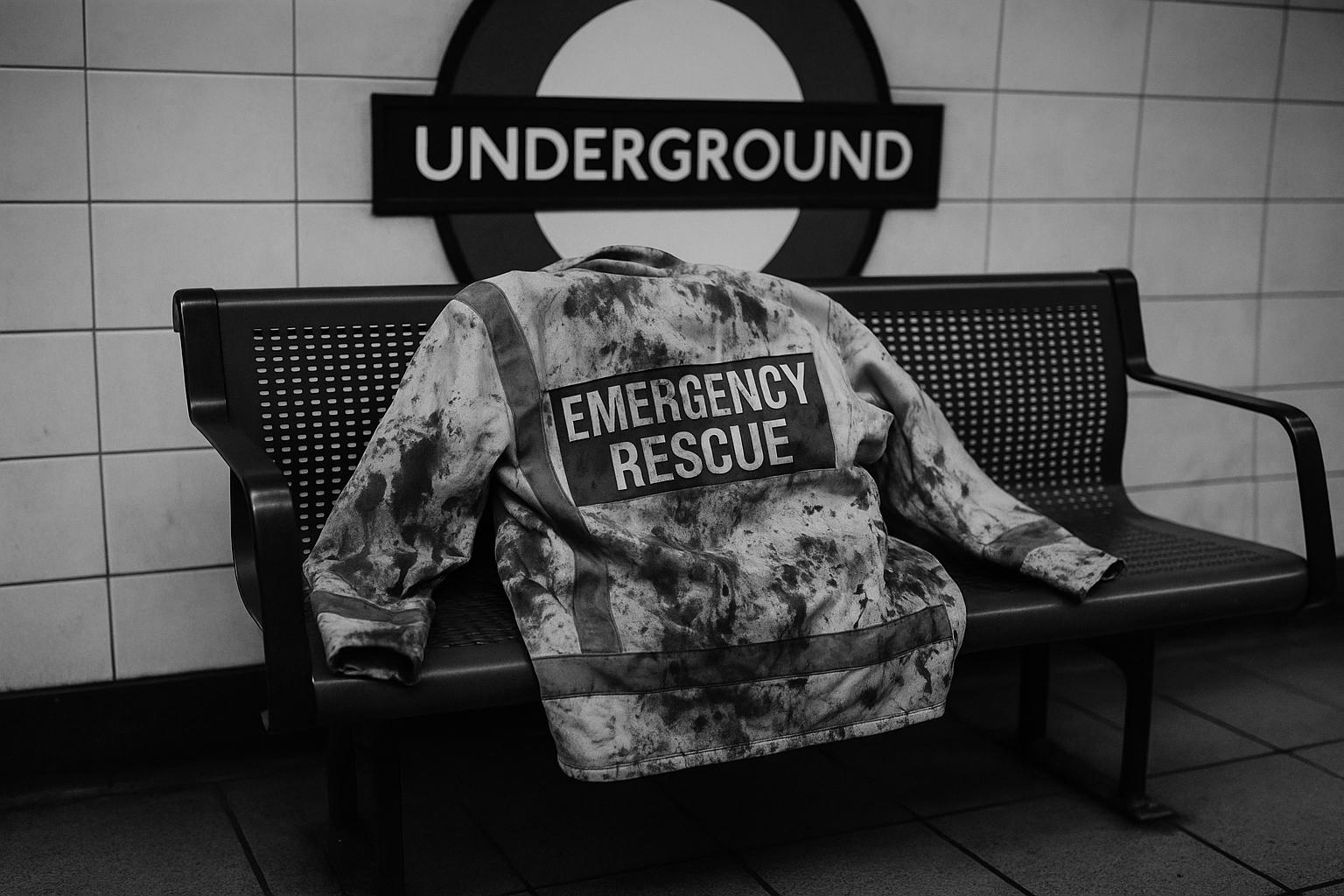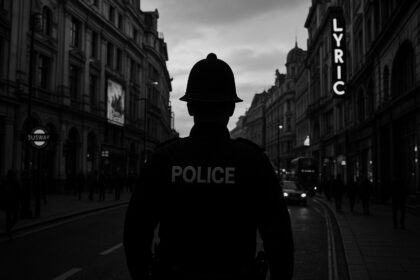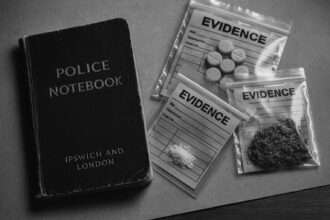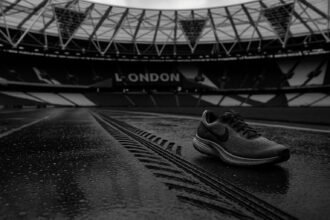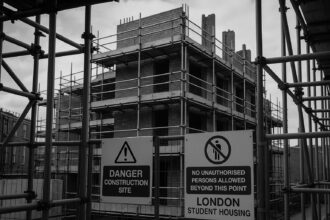On the 20th anniversary of the July 7, 2005, London terror bombings, frontline police officer Anna Bearman and GP Dr Peter Holden share gripping accounts of bravery, chaos and tough medical decisions amid scarce resources during one of the city’s darkest days.
Superintendent Anna Bearman vividly recalls the harrowing moments of the July 7, 2005, London terror bombings—an event that claimed 52 lives and injured nearly 800. At just 23 years old and serving as a police constable with the Metropolitan Police response team, Bearman was initially dispatched to what was thought to be a fire at King’s Cross station. However, she was soon rerouted to Russell Square, where dozens of injured people emerged from the station, setting the grim tone for what was unfolding. It was here that she experienced a “pinch in the stomach” as the reality set in: this was not a fire but a deliberate act of terror. With a mixture of panic and urgency, Bearman and her colleagues moved into the tunnels, walking approximately a mile along the tracks amid chaos to evacuate victims, including one who had lost a lower limb. The lack of stretchers forced them to carry casualties manually. This harrowing effort marked the beginning of a day dominated by trauma and resilience, as the team later focused on calming and directing the public while contending with the shock of the blood-stained clothing she wore by the end of the day. The 20th anniversary of the attacks serves as a poignant reminder of those lost and the enduring impact on families and responders alike.
While Bearman’s experience captures the immediate frontline response, Dr Peter Holden’s account from Tavistock Square offers insight into the medical crisis wrought by the fourth bomb, detonated on a rerouted number 30 bus. Dr Holden, a 50-year-old GP and deputy chairman of the British Medical Association’s GP committee, was in London for a meeting when the explosion shook the ground beneath BMA House. He described the moment as surreal, with everything turning “salmon pink” following the blast, a vivid image of sudden devastation. He quickly rallied 15 doctors to establish an impromptu triage centre to manage the influx of casualties brought in on makeshift stretchers. The doctors faced difficult triage decisions under extreme pressure, often with limited medical supplies—a challenge repeated across London’s emergency services that day. Holden’s reflections highlight not just the physical injuries but also the emotional and logistical complexities encountered during such an unprecedented urban disaster.
Together, these firsthand accounts provide a multi-dimensional perspective on the July 7 attacks: from the raw immediacy experienced by police officers navigating the underground tunnels to the critical and strategic responses coordinated by medical professionals above ground. Both Bearman and Holden emphasize the extraordinary level of courage and improvisation required in an evolving crisis with scarce resources. The events underscored the need for enhanced emergency preparedness and multi-agency cooperation, lessons that continue to influence London’s disaster response frameworks.
These narratives not only memorialise the victims but also honour the resilience of the responders who, despite the fear and chaos, acted with determination and humanity. As the city marked the 20th anniversary, the stories of those on the front lines serve as enduring testimony to the profound effects of the bombings and the indelible spirit shown in the face of terror.
 Reference Map:
Reference Map:
- Paragraph 1 – [1], [2]
- Paragraph 2 – [1], [3], [4], [5], [6], [7]
- Paragraph 3 – [1], [3], [4], [6], [7]
- Paragraph 4 – [1], [2], [3], [4]
Source: Noah Wire Services
- https://www.express.co.uk/news/uk/2078284/first-responders-recall-sinister-moment-during-july-7-bombings – Please view link – unable to able to access data
- https://www.expressandstar.com/uk-news/2025/07/06/first-responders-share-horror-over-july-7-atrocities/ – Superintendent Anna Bearman, then a 23-year-old police constable, recalls the moment she realised the severity of the July 7, 2005, bombings. Initially responding to a possible fire at King’s Cross, she was redirected to Russell Square, where she witnessed injured individuals fleeing the station. This experience marked her realisation that the situation was more sinister than anticipated. Bearman describes the scene as chaotic, with numerous injured people and a sense of panic. She and her team focused on assisting those unable to walk out, walking a mile on the tracks to evacuate casualties. The article highlights the challenges faced by first responders during the attacks and the importance of remembering the victims and their families on the 20th anniversary.
- https://www.timeout.com/london/blog/july-7-ten-years-on-dr-peter-holden-remembers-his-experience – Dr. Peter Holden, a family doctor and deputy chairman of the BMA GP committee, recounts his experience during the July 7, 2005, bombings. Summoned to a meeting at BMA House in Tavistock Square, he was present when the fourth bomb detonated on the number 30 bus. Describing the moment, he recalls a flash, followed by smoke, and the ground shaking. Dr. Holden took charge of the medical response, leading 15 doctors to create an impromptu triage centre. He reflects on the hard decisions made during the crisis and the impact it had on London’s medical response to disasters.
- https://www.bbc.co.uk/news/10509744 – This BBC News article discusses the events of July 7, 2005, when four suicide bombers attacked London’s transport system, resulting in 52 deaths and nearly 800 injuries. It focuses on the experiences of Dr. Peter Holden, who was at the British Medical Association (BMA) headquarters in Tavistock Square when the number 30 bus was bombed. Dr. Holden describes the initial shock, the arrival of emergency services, and the improvisation required due to a lack of medical supplies. The article highlights the coordination among medical professionals and emergency responders during the crisis.
- https://www.healthday.com/health-news/public-health/london-terror-bombings-doctors-tell-their-stories-527313.html – This HealthDay article features firsthand accounts from doctors who responded to the July 7, 2005, London bombings. Dr. Peter Holden, a family doctor and officer of the British Medical Association, recounts his experience at BMA House during the attacks. He describes the initial shock, the arrival of casualties, and the challenges faced due to limited medical supplies. The article provides insights into the medical response to the bombings and the lessons learned from the incident.
- https://www.pulsetoday.co.uk/news/politics/7-bombings/ – This Pulse Today article discusses the aftermath of the July 7, 2005, London bombings, focusing on the experiences of Dr. Peter Holden, a GP from Matlock, Derbyshire. Dr. Holden, who was at the BMA headquarters in Tavistock Square during the attacks, describes the initial explosion, the arrival of casualties, and the improvisation required due to a lack of medical supplies. He reflects on the decisions made during the crisis and the impact it had on London’s medical response to disasters.
- https://www.bbc.com/news/uk-12310013 – This BBC News article provides insights into the experiences of Dr. Peter Holden during the July 7, 2005, London bombings. Dr. Holden, a GP from Matlock, Derbyshire, was working at the BMA headquarters in Tavistock Square when the number 30 bus was bombed. He describes the initial shock, the arrival of casualties, and the improvisation required due to a lack of medical supplies. The article highlights the challenges faced by medical professionals during the crisis and the decisions made to prioritise care for the most severely injured.
Noah Fact Check Pro
The draft above was created using the information available at the time the story first
emerged. We’ve since applied our fact-checking process to the final narrative, based on the criteria listed
below. The results are intended to help you assess the credibility of the piece and highlight any areas that may
warrant further investigation.
Freshness check
Score:
8
Notes:
The narrative was published on 6 July 2025, coinciding with the 20th anniversary of the 7/7 bombings. Similar accounts have been published in previous years, notably on the 10th anniversary in 2015. ([the-independent.com](https://www.the-independent.com/news/uk/home-news/7-7-bombings-10-years-on-four-emergency-workers-who-saved-lives-recall-the-shocking-day-that-52-people-were-killed-10345658.html?utm_source=openai)) The 20th anniversary context adds freshness, but the core content has been previously reported.
Quotes check
Score:
7
Notes:
Direct quotes from Superintendent Anna Bearman and Dr. Peter Holden are present. Similar quotes from Dr. Holden have appeared in earlier reports, such as in 2015. ([the-independent.com](https://www.the-independent.com/news/uk/home-news/7-7-bombings-10-years-on-four-emergency-workers-who-saved-lives-recall-the-shocking-day-that-52-people-were-killed-10345658.html?utm_source=openai)) The repetition of these quotes suggests they are not exclusive to this narrative.
Source reliability
Score:
6
Notes:
The narrative originates from Express & Star, a regional newspaper. While it is a legitimate source, it is not as widely recognised as national outlets like the BBC or The Guardian. This raises some questions about the narrative’s reach and potential biases.
Plausability check
Score:
8
Notes:
The accounts from Superintendent Bearman and Dr. Holden are plausible and align with known events from the 7/7 bombings. However, the repetition of similar narratives over the years may indicate a lack of new information or perspectives. The narrative’s tone and language are consistent with typical journalistic reporting.
Overall assessment
Verdict (FAIL, OPEN, PASS): OPEN
Confidence (LOW, MEDIUM, HIGH): MEDIUM
Summary:
The narrative provides personal accounts from the 7/7 bombings, coinciding with the 20th anniversary. While the content is plausible and the quotes are consistent with previous reports, the repetition of similar narratives over the years and the source’s regional nature raise questions about the narrative’s originality and reach.


